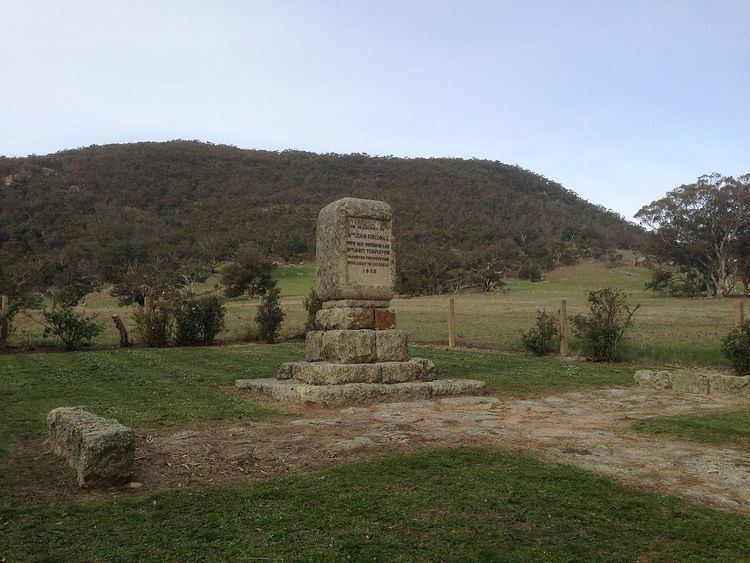Name Eliza Forlonge | ||
 | ||
Coordinates 36°50′37″S 145°37′28″E / 36.843703°S 145.624385°E / -36.843703; 145.624385Coordinates: 36°50′37″S 145°37′28″E / 36.843703°S 145.624385°E / -36.843703; 145.624385 Died August 5, 1859, Euroa, Australia | ||
Lo! Part I, 9H
Eliza Forlong (1784–1859) was an Australian pioneer who played a large part in introducing Merino sheep to south-east Australia.
Contents

Eliza was born in Glasgow, Scotland, the daughter of Alexander Jack, teacher, and his wife Jean, née Mackinnon.

In 1804, Eliza married John Forlong (Forlong or Furlong), a Glasgow wine merchant. By the mid 1820s, four of her six children had died from tuberculosis. The two surviving sons were William (b. 1813) and Andrew (b. 1814). John Forlonge decided to move the family to the warmer climate of Australia.
Aware that fine wool from merino sheep in Saxony, Germany was bringing the highest prices, the Forlonges went to Leipzig to study methods of sheep rearing and wool preparation. Their expertise was enhanced by the use of an instrument to measure wool Eliza made three trips (of several months each).
In 1828-30 Eliza walked through Saxony buying sheep. She selected the best fine-wool Merino and drove them to Hamburg for shipping to Great Britain. in 1829, the sheep came to Hobart, Van Diemen's Land with son William in the ship Clansman and John moved the sheep to Kenilworth Station (Coordinates: -41.865576, 147.330230), near Campbell Town, Tasmania. In January 1831, Eliza, John and Andrew arrived in Van Diemen's Land on the ship Czar with the rest of the sheep and joined John.
The farm they established was called "Winton" at Kirklands (Coordinates: -41.88682, 147.39423), also near Campbell Town. They built sheep houses in the Saxon style, wells, a farmhouse and outbuildings.
Never content with the size and situation of their land grants, the family conducted an 'epistolary war' with colonial officials. In April 1834, in an attempt to influence English authorities, Eliza, her husband, John and son, Andrew went back in the ship Norval to Great Britain. John died there in November 1834.
William Forlonge sold Kenilworth and part of their flock in 1838 to the Taylor family.
In the late 1830s, William and Andrew Forlonge moved to the Port Philip District (then a part of New South Wales but later part of the colony of Victoria). William married John's niece Marion Templeton. Eliza lived with William and his family at Woodstock, Merri Creek, near Whittlesea. After some years squatting, Andrew went back to Scotland where he married. They moved to the United States of America and unknowing to many people, moved back to England for the last 20 years of his life.
In the early 1850s, William bought the lease of Seven Creeks station from Barnes & Holland near Euroa. Eliza ran the house and managed station affairs in the frequent absences of William and his wife.
Alfred William Howitt, Australian anthropologist, explorer and naturalist, described her as 'one of the pleasantest and most energetic ladies I have ever met with'.
Eliza died on 5 August 1859.
